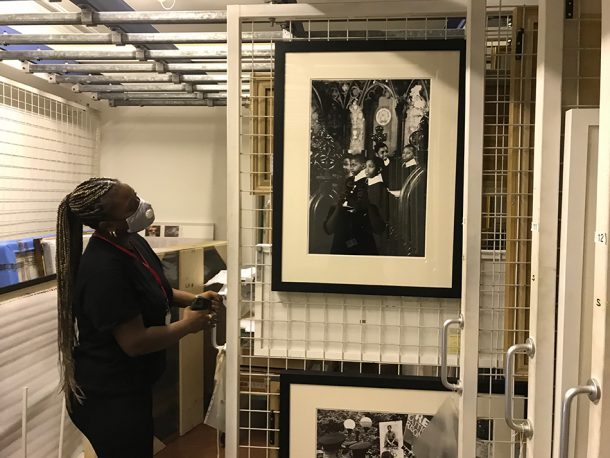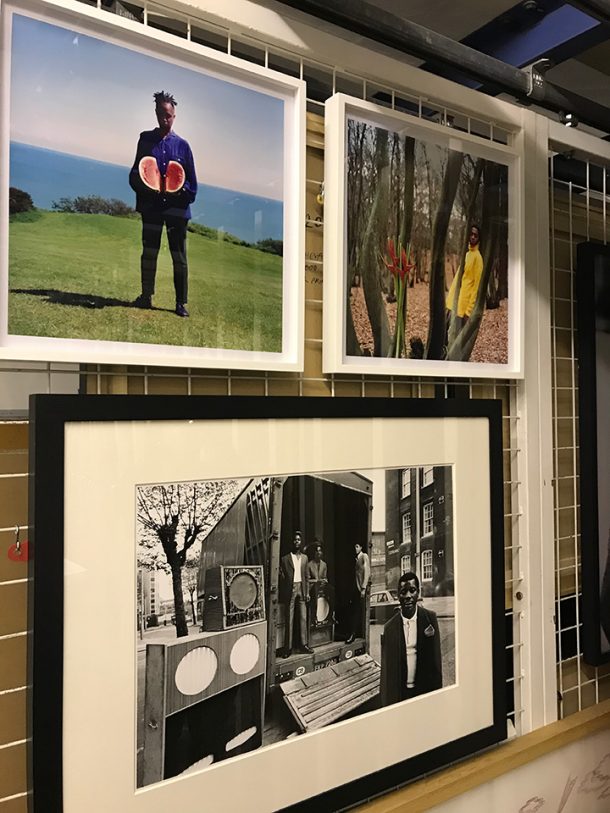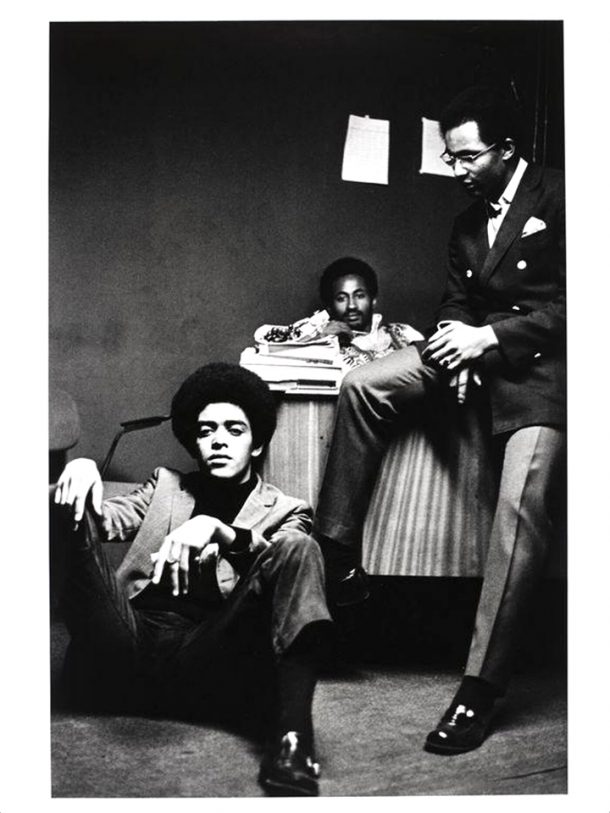Locked away with a great deal of backstage and behind-the-scenes appeal, the museum’s stores hold a vast collection of objects that are not on permanent display in the V&A galleries. Although I work at the V&A, there’s something so exciting about visiting the stores; something I’m not sure I’ll ever get used to.
The purpose of a recent visit to one of the object stores was to look at the early work of the photographer Dennis Morris. Born in Jamaica in 1960, Morris later moved with his mother to Dalston, east London. He first learnt about photography as a by-product of going to church and joining the boys’ choir, which had a photographic club attached to it to further develop skills for the young boys. From that point onwards, Morris became well known throughout the area as ‘Mad Dennis’, photographing the seemingly irrelevant things that caught his attention. This early work taken in the 1970s was later collated into the series Growing Up Black.

This powerful collection of photographs was collected in 2010 as part of the Staying Power project, a five-year partnership between the V&A and the Black Cultural Archives, which aimed to explore the Black British experience from the 1950s to the 1990s. The project resulted in the acquisition of 118 photographs by 17 photographers alongside oral histories conducted by the Black Cultural Archives. Like Morris I come from Hackney and so, upon starting at the V&A, that my first research report was to centre on Morris felt like coming full circle. Much of Morris’ early work is shot in Hackney and shows places that I have passed regularly enroute to work or school. Most notably, in Growing Up Black, Morris documents my grandmother’s church – Shiloh, located in Dalston – which happens to be the oldest black church in the whole city. His London, as depicted in the series, is the London that my parents would have experienced, at a time when a relatively small community of Caribbean migrants set up home. I love the idea that as well as holding many personal memories, the streets of London have played witness to many moments and lifetimes that predate my whole experience.

Growing Up Black was shot over several years in and around the city and documents the black British experience during the 1970s, at a time when being both Black and British held varying levels of difficulty, including racism and poverty. Morris’ London transcends those circumstantial inequalities and provides a poised, dignified and vivacious account of what it meant to grow up Black. Captured on black and white film, these prints immortalise the place of these communities in British history through the effective use of compositional contrasts that create images that are both simple and striking. Morris’ choice of film holds space for composition and lighting to take precedence, leaving us with an overall sense of calm when viewing the prints. The Brothers, Black House is a favourite of mine. The image depicts three men, all seated in a manner of speaking, dressed in sharp and well-cut suits and afros, all in the fashion of the 1970s. The image’s composition is simple yet dynamic, but my favourite thing about the photograph is how they are dressed with such poise and esteem.

I suppose the most significant implication of this body of work being in the V&A’s collection is to hold space for the many faces of Britain. East London is a relatively small area, but, like the Windrush generation, has had a considerable impact on the social and cultural fabric of Britain. As such, people in east London are looking for a meaningful consideration and understanding of its culture. Firstly, that means recognising that the people of east London believe our culture is as important as any other and deserves its place in the museum’s collection. Secondly, that to truly serve the nation the museum should tell as many narratives of who we are as possible to understand and represent Britain as a whole.
The narrative of Morris’ Britain is that of Black pride, and how we can find joy within the simplest constraints. Morris depicts the resourcefulness of the human spirit, how we can make something out of nothing. That you can never be too broke to have a good time, despite living in a city as expensive as London! And that the Black British existence, even in the most mundane settings, can be inherently political.


